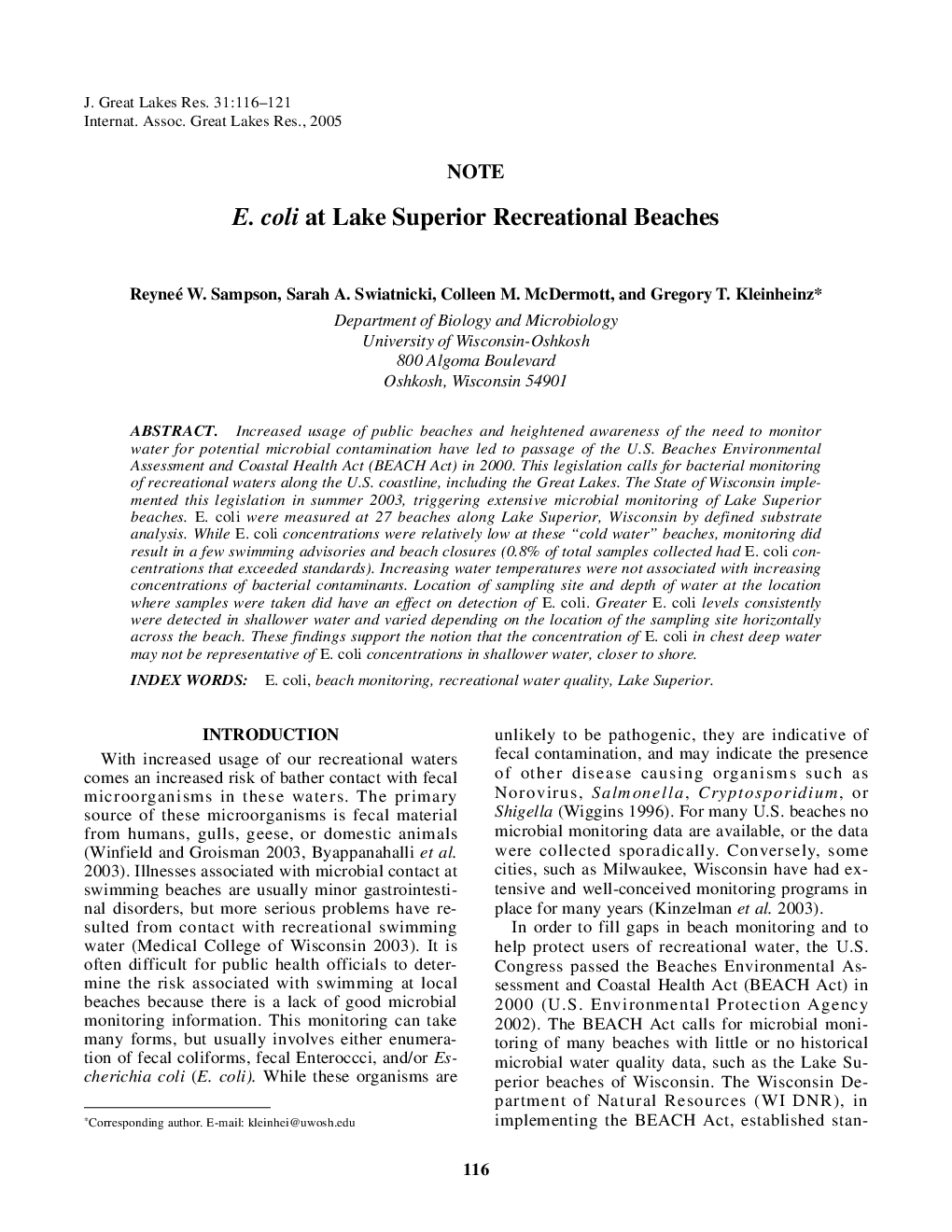| Article ID | Journal | Published Year | Pages | File Type |
|---|---|---|---|---|
| 9450213 | Journal of Great Lakes Research | 2005 | 6 Pages |
Abstract
Increased usage of public beaches and heightened awareness of the need to monitor water for potential microbial contamination have led to passage of the U.S. Beaches Environmental Assessment and Coastal Health Act (BEACH Act) in 2000. This legislation calls for bacterial monitoring of recreational waters along the U.S. coastline, including the Great Lakes. The State of Wisconsin implemented this legislation in summer 2003, triggering extensive microbial monitoring of Lake Superior beaches. E. coli were measured at 27 beaches along Lake Superior, Wisconsin by defined substrate analysis. While E. coli concentrations were relatively low at these “cold water” beaches, monitoring did result in a few swimming advisories and beach closures (0.8% of total samples collected had E. coli concentrations that exceeded standards). Increasing water temperatures were not associated with increasing concentrations of bacterial contaminants. Location of sampling site and depth of water at the location where samples were taken did have an effect on detection of E. coli. Greater E. coli levels consistently were detected in shallower water and varied depending on the location of the sampling site horizontally across the beach. These findings support the notion that the concentration of E. coli in chest deep water may not be representative of E. coli concentrations in shallower water, closer to shore.
Related Topics
Physical Sciences and Engineering
Earth and Planetary Sciences
Earth and Planetary Sciences (General)
Authors
Reyneé W. Sampson, Sarah A. Swiatnicki, Colleen M. McDermott, Gregory T. Kleinheinz,
